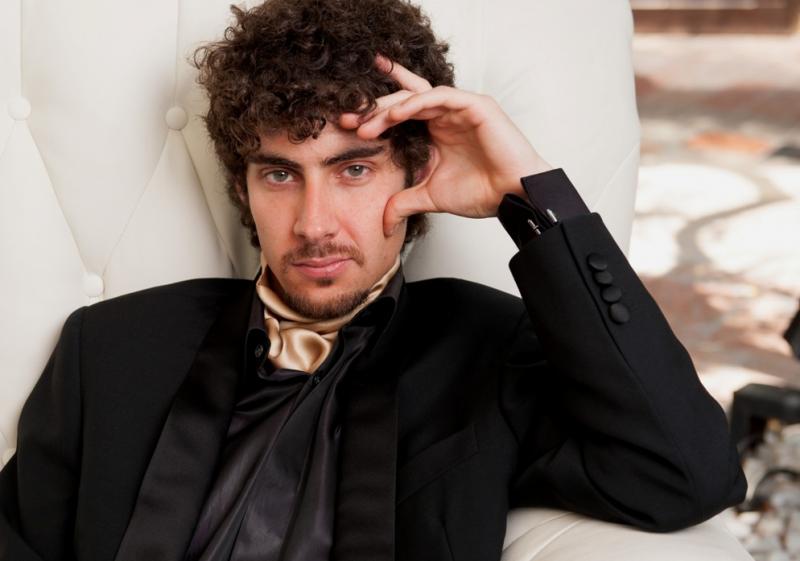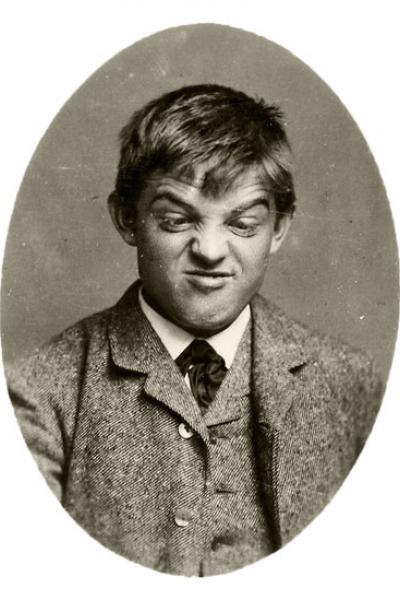Colli, BBCSO, Oramo, Barbican Hall | reviews, news & interviews
Colli, BBCSO, Oramo, Barbican Hall
Colli, BBCSO, Oramo, Barbican Hall
Fresh imagination in Rachmaninov, weird Sibelius and affirmative Nielsen

Was 1911 the best ever year for music?
You don’t engage a pianist who can’t handle the torrents of “the Rach Three”, and we were lucky in the replacement for an indisposed Yevgeny Subdin, young Leeds and Salzburg prizewinner Federico Colli, making his London concerto debut. An inspired one, to say the least. This is an artist who not only plays all the notes but also brings an absolutely individual imagination to what lies behind them. The tempo he set at the start of a work which might well have segued straight out of Sibelius’s fragmentary wood-magic felt a bit held back, and it was clear that Sakari Oramo and the BBC Symphony Orchestra were the ones who would have to keep tabs – which they did with unbelievable clarity and generosity of spirit, right from guest principal bassoonist Amy Harman’s soulful counterpoint to the opening melody; Colli’s self-absorption as he curved around the keyboard, a million miles from the upright, beaming, open-to-the-world attitude of veteran virtuoso Garrick Ohlsson here the other side of Christmas, wasn’t going to give.
Rachmaninov's final peroration was the only point where Oramo let shapely strings dictate the pace
Yet he didn’t have to, with all orchestral colours attuned to his singular vision – and I’ve never noticed the low harmonies of the horns, beautifully led as ever by Nicholas Korth, or indeed other touches in what usually comes across as mere support orchestration, sounding so subtly complementary to the soloist. Colli's vision shouldn’t have worked as well as it did, but somehow the agogic pauses, unusual breaks in phrases and dynamic extremes avoided mannerism and all added up to music with something to say, which isn’t always the case when the concerto is treated like a warhorse.
Colli’s retreat into dreams offered rare metaphysics, but he handled his first big meditation in the slow movement with a boldness that nevertheless brought tears to the eyes, and he managed the cavalcade that leads to the finale’s big tune, so often fudged, with perfect impetus towards a winged poem. Its final peroration was the only point where Oramo let shapely strings dictate the pace, and here at the last hurdle Colli, still in his own world, nearly fell, but they all got to the end in one thrilling piece, justifying a singular and well-paced journey.
 With the Nielsen Third, first major offering of the composer's 150th anniversary year, we stayed out in the fresh air (a younger Nielsen in gurning mood pictured right, courtesy of the Royal Library, Copenhagen). The opening Allegro espansivo in Oramo’s determined interpretation - very loud in this venue, a tad driven, but a style well suited to Nielsen in this mood - flew like an arrow through seismic waves and cosmic merry-go-round waltzes to a triumphant final chord, proud man in all his unstoppable glory.
With the Nielsen Third, first major offering of the composer's 150th anniversary year, we stayed out in the fresh air (a younger Nielsen in gurning mood pictured right, courtesy of the Royal Library, Copenhagen). The opening Allegro espansivo in Oramo’s determined interpretation - very loud in this venue, a tad driven, but a style well suited to Nielsen in this mood - flew like an arrow through seismic waves and cosmic merry-go-round waltzes to a triumphant final chord, proud man in all his unstoppable glory.
Impassive nature launched the Andante pastorale, only to be questioned by melancholy birdsong – flautist Daniel Pailthorpe and oboist Richard Simpson peerlessly personable as ever – and human string responses tore at the heartstrings before we reached the plateau, that radiant summer landscape with wordless soprano and baritone voices (Lucy Hall and Marcus Farnsworth, ecstatic at the back of the platform). Indebted to Wagnerian forest murmurs but somehow more redolent of all that sky you get in Danish landscape paintings, it’s followed by a dynamic wander into the woods, Nielsen’s most puzzling movement structurally; but especially with focused dynamism like Oramo’s, the invention is so strong and its direction so unstoppable that you never question the argument.
There’s not a slack bar in this entire masterpiece, not even in a finale where a big tune, stout and steaky like the parade glories in the comparable movement of Elgar’s Second Symphony – another masterpiece of 1911 which, along with the First, Oramo has championed in Stockholm – seems to say it all straight off, and yet ends up meriting a new and noble key in its typically compact final statement. This Nielsen series is already living up to the even more needful cycle of six Martinů symphonies championed by Oramo’s BBCSO predecessor, Jiří Bělohlávek. Both conductors have already persuaded us that both composers are up there alongside Sibelius, Shostakovich and Vaughan Williams as the towering symphonists of the 20th century, and possibly the greatest masters of affirmative capability, for you couldn’t help but come away from concerts like this feeling better about life.
rating
Share this article
The future of Arts Journalism
You can stop theartsdesk.com closing!
We urgently need financing to survive. Our fundraising drive has thus far raised £49,000 but we need to reach £100,000 or we will be forced to close. Please contribute here: https://gofund.me/c3f6033d
And if you can forward this information to anyone who might assist, we’d be grateful.

Subscribe to theartsdesk.com
Thank you for continuing to read our work on theartsdesk.com. For unlimited access to every article in its entirety, including our archive of more than 15,000 pieces, we're asking for £5 per month or £40 per year. We feel it's a very good deal, and hope you do too.
To take a subscription now simply click here.
And if you're looking for that extra gift for a friend or family member, why not treat them to a theartsdesk.com gift subscription?
more Classical music
 Hallé John Adams festival, Bridgewater Hall / RNCM, Manchester review - standing ovations for today's music
From 1980 to 2025 with the West Coast’s pied piper and his eager following
Hallé John Adams festival, Bridgewater Hall / RNCM, Manchester review - standing ovations for today's music
From 1980 to 2025 with the West Coast’s pied piper and his eager following
 Kaploukhii, Greenwich Chamber Orchestra, Cutts, St James's Piccadilly review - promising young pianist
A robust and assertive Beethoven concerto suggests a player to follow
Kaploukhii, Greenwich Chamber Orchestra, Cutts, St James's Piccadilly review - promising young pianist
A robust and assertive Beethoven concerto suggests a player to follow
 Robin Holloway: Music's Odyssey review - lessons in composition
Broad and idiosyncratic survey of classical music is insightful but slightly indigestible
Robin Holloway: Music's Odyssey review - lessons in composition
Broad and idiosyncratic survey of classical music is insightful but slightly indigestible
 Classical CDs: Wolf-pelts, clowns and social realism
British ballet scores, 19th century cello works and contemporary piano etudes
Classical CDs: Wolf-pelts, clowns and social realism
British ballet scores, 19th century cello works and contemporary piano etudes
 Bizet in 150th anniversary year: rich and rare French offerings from Palazzetto Bru Zane
Specialists in French romantic music unveil a treasure trove both live and on disc
Bizet in 150th anniversary year: rich and rare French offerings from Palazzetto Bru Zane
Specialists in French romantic music unveil a treasure trove both live and on disc
 Scottish Chamber Orchestra, Ibragimova, Queen’s Hall, Edinburgh review - rarities, novelties and drumrolls
A pity the SCO didn't pick a better showcase for a shining guest artist
Scottish Chamber Orchestra, Ibragimova, Queen’s Hall, Edinburgh review - rarities, novelties and drumrolls
A pity the SCO didn't pick a better showcase for a shining guest artist
 Kilsby, Parkes, Sinfonia of London, Wilson, Barbican review - string things zing and sing in expert hands
British masterpieces for strings plus other-worldly tenor and horn - and a muscular rarity
Kilsby, Parkes, Sinfonia of London, Wilson, Barbican review - string things zing and sing in expert hands
British masterpieces for strings plus other-worldly tenor and horn - and a muscular rarity
 From Historical to Hip-Hop, Classically Black Music Festival, Kings Place review - a cluster of impressive stars for the future
From quasi-Mozartian elegance to the gritty humour of a kitchen inspection
From Historical to Hip-Hop, Classically Black Music Festival, Kings Place review - a cluster of impressive stars for the future
From quasi-Mozartian elegance to the gritty humour of a kitchen inspection
 Shibe, LSO, Adès, Barbican review - gaudy and glorious new music alongside serene Sibelius
Adès’s passion makes persuasive case for the music he loves, both new and old
Shibe, LSO, Adès, Barbican review - gaudy and glorious new music alongside serene Sibelius
Adès’s passion makes persuasive case for the music he loves, both new and old
 Anja Mittermüller, Richard Fu, Wigmore Hall review - a glorious hall debut
The Austrian mezzo shines - at the age of 22
Anja Mittermüller, Richard Fu, Wigmore Hall review - a glorious hall debut
The Austrian mezzo shines - at the age of 22
 First Person: clarinettist Oliver Pashley on the new horizons of The Hermes Experiment's latest album
Compositions by members of this unusual quartet feature for the first time
First Person: clarinettist Oliver Pashley on the new horizons of The Hermes Experiment's latest album
Compositions by members of this unusual quartet feature for the first time

Add comment